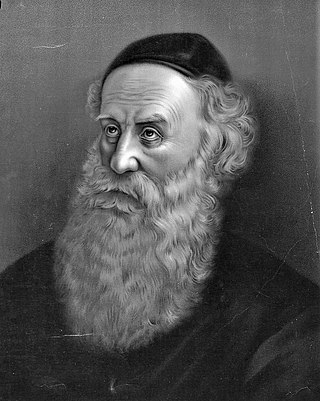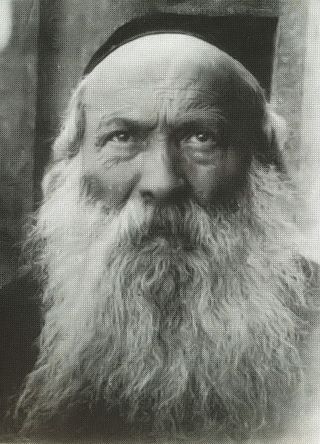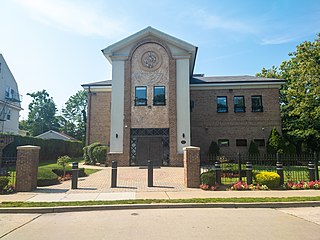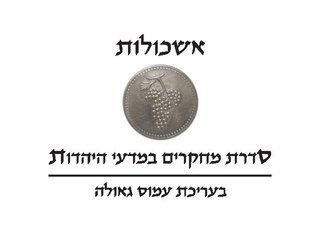
A Rebbe or Admor is the spiritual leader in the Hasidic movement, and the personalities of its dynasties. The titles of Rebbe and Admor, which used to be a general honorific even before the beginning of the movement, became, over time, almost exclusively identified with its Tzadikim.

Shneur Zalman of Liadi, commonly known as the Alter Rebbe or Baal Hatanya, was a rabbi and the founder and first Rebbe of Chabad, a branch of Hasidic Judaism. He wrote many works and is best known for Shulchan Aruch HaRav, Tanya, and his Siddur Torah Or, compiled according to the Nusach Ari.

The Tanya is an early work of Hasidic philosophy, by Rabbi Shneur Zalman of Liadi, the founder of Chabad Hasidism, first published in 1796. Its formal title is Likkutei Amarim but is more commonly known by its first word (tanya), which in Hebrew means "it has been taught". Zalman is referring to a baraita in "Niddah" chapter 3 in the word’s first usage. The Tanya is composed of five sections that define Hasidic mystical psychology and theology as a handbook for daily spiritual life in Jewish observance.
Neo-Hasidism, Neochassidut, or Neo-Chassidus, is an approach to Judaism in which people learn beliefs and practices of Hasidic Judaism, and incorporate it into their own lives or prayer communities, yet without formally joining a Hasidic group. Over the 20th century neo-Hasidism was popularized by the works of writers such as Hillel Zeitlin, Martin Buber, Abraham Joshua Heschel, Lawrence Kushner, Zalman Schachter-Shalomi, and Arthur Green.

Yaakov Yitzchak HaLevi Horowitz, known as "the Seer of Lublin", ha-Chozeh MiLublin; was a Hasidic rebbe from Poland.

The Ringelblum Archive is a collection of documents from the World War II Warsaw Ghetto, collected and preserved by a group known by the codename Oyneg Shabbos, led by Jewish historian Emanuel Ringelblum. The group, which included historians, writers, rabbis, and social workers, was dedicated to chronicling life in the Ghetto during the German occupation. They worked as a team, collecting documents and soliciting testimonies and reports from dozens of volunteers of all ages. The materials submitted included essays, diaries, drawings, wall posters, and other materials describing life in the Ghetto. The archive assembly began in September 1939 and ended in January 1943; the material was buried in the ghetto in three caches.

Aleksander is a Polish Hasidic dynasty originating from the city of Aleksandrow Lodzki, Poland, where it was founded by Grand Rabbi Yechiel Denciger (1828–1894). Aleksander is a branch of Vurka, as Shraga Fayvel Danciger was a leading disciple of Rabbi Israel Yitzhak Kalish of Vurka. Prior to the Holocaust, Aleksander was the second to largest Hasidic group in Poland. They attracted artisans, merchants and water carriers rather than elite Talmudic scholars and richer people who were attracted to Ger. Like the rest of Polish Jewry, almost all of Aleksander hasidim were murdered in the Holocaust. Between the world wars, Hasidic Jews from all over flocked to the small village of Aleksander to spend the holiest days of the Jewish year in the presence of their spiritual leader, their rebbe, Rabbi Yitzchak Menachem Danciger (1879–1942). The Rebbe of Aleksander attempted to remain neutral in political issues while emphasizing communal prayer and the study of Torah. He was murdered by the Germans on September 5, 1942, eight days before Rosh Hashana, at Treblinka extermination camp. Today, Aleksander has emerged from the ashes of the Holocaust and continues growing in numbers in small communities in America, Europe and Israel.

Tosh is a Hasidic dynasty originating in Nyirtass, Hungary. Today, it is based in Kiryas Tosh, Quebec, Canada, outside Boisbriand, Quebec, a suburb of Montreal, Quebec. The current leader is Grand Rabbi Elimelch Halevi Segal-Loewy, who succeeded his late father, Meshulim Feish Lowy, upon the latter's death on 12 August 2015. Tosher Hasidim have synagogues in the United States, in Boro Park, Williamsburg, Brooklyn, Kiryas Joel, and Monsey, as well as in Montreal and in London, England.

Kalonimus Kalman Szapiro, was the Grand Rabbi of Piaseczno, Poland, who authored a number of works and was murdered by the Nazis during the Holocaust. He is best remembered for a series of homilies on parshah that were delivered almost every Shabbat during the time he spent with his students in the Warsaw ghetto between the years 1939 and 1942. Shortly after the final entry in this series of meditations, the entire community in the ghetto was sent to the gas chambers in Treblinka. This work is collected under the title Esh Kodesh.

Toldos Avrohom Yitzchok is a Hasidic group located in Jerusalem's Mea Shearim neighborhood. It is an offshoot of the Hasidic group Toldos Aharon, which is in turn an offshoot of Shomer Emunim. It is led by its Rebbe, Rabbi Shmuel Yaakov Kohn.
Grodzhisk is a Hasidic dynasty founded by Rebbe Elimelech Szapira, author of Imrei Elimelech.

Rabbi Moshe Weinberger is an American Chasidic rabbi, educator, author, translator, and speaker. He is the founding rabbi of Congregation Aish Kodesh in Woodmere, New York, and former Mashpia/mashgiach ruchani at the Rabbi Isaac Elchanan Theological Seminary (RIETS). He has recorded more than 5000 lectures on chasidic thought and philosophy as well as Halakha and a variety of other topics in Judaism.

Shmuel Bornsztain, Hebrew calendar, also spelled Borenstein or Bernstein, was the second Rebbe of the Sochatchov Hasidic dynasty. He was known as the Shem Mishmuel by the title of his nine-volume work of Torah and Hasidic thought. He was a leading Hasidic thinker in early 20th-century Europe and a Rebbe to thousands of Hasidim in the Polish cities of Sochaczew (Sochatchov) and Łódź.

Dovid Bornsztain, also spelled Borenstein, Bornstein and Bernstein, known as the Chasdei Dovid, was the third Rebbe of the Sochatchov Hasidic dynasty. He succeeded his father, Rabbi Shmuel Bornsztain, as Rebbe upon the latter's death in 1926.

Shlomo Chanoch Hakohen Rabinowicz was the fourth and last rebbe of the Radomsk hasidic dynasty. He was the eldest son of the third Radomsker rebbe,Yechezkel Rabinowicz and great-grandson of the founder of the dynasty, Shlomo Rabinowicz, known as the Tiferes Shlomo. Under his leadership, Radomsk became the third largest hasidic dynasty in Poland, after Ger and Alexander. Rabinowicz built a network of 36 yeshivas across Poland and Galicia that enrolled over 4,000 students by 1939. He was murdered in the Warsaw Ghetto together with his entire family.
Sochatchov is a Hasidic dynasty originating from the town of Sochaczew, Poland, where it was founded by Avrohom Bornsztain (1838–1910). Sochatchov is a branch of Kotzk Hasidism, which in part is a branch of Peshischa Hasidism. After World War I the dynasty was moved to Łódź and, subsequently, to other nearby towns. After World War II the dynasty was transplanted to Israel, where it thrives to this day.

Radomsk is a hasidic dynasty named after the town of Radomsko in Łódź province, south-central Poland. The dynasty was founded in 1843 by Shlomo Hakohen Rabinowicz. His son, grandson and great-grandson also led the dynasty, which had thousands of followers. On the eve of World War II, Radomsk was the third largest Hasidic dynasty in Poland, after Ger and Alexander.

Congregation Aish Kodesh is an Orthodox Jewish congregation and synagogue, located in Woodmere, Nassau County, on Long Island, New York, in the United States.
Sarah Horowitz-Sternfeld (1838-1937), of Chęciny, Poland, was a prominent religious personality in the Hasidic community in the pre-World-War II era. Horowitz-Sternfeld was associated with the Chentshin-Ozharov, an amalgamation of the Chentshin and Ozharov dynasties, and was known as the Chentshiner Rebbetzin. According to scholars of Hasidic history, it is clear that Horowitz-Sternfeld was revered by Hasidic Jews of Poland for her spiritual position and she had adopted the custom typically associated of Hasidic leaders to receive petitions for blessings. The exact degree of her status in the Hasidic is contested, with some authors portraying Horowitz-Sternfeld as a "woman rebbe".

"Eshkolot" is a Jewish Studies book series, edited by Amos Geula, a project of the Herzog College research institute that is published by the research authority of Herzog College in collaboration with the World Union of Jewish Studies. The Judaic Studies series includes works from the various fields of Judaism, which have a significant contribution and are a complete study of a particular subject or a critical edition of a manuscript with a comprehensive introduction. Each book is accompanied by a professional academic committee and undergoes academic editing as well as peer review. Some of the books in the series have unique databases open to the public which can be found on the Herzog College's Research Authority website under "Herzog Databases".















